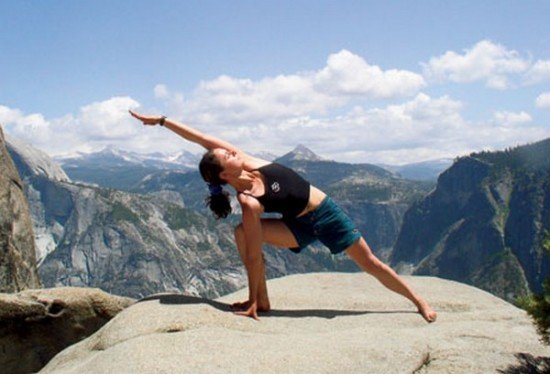According to the Yoga Sutras of Patanjali, the present definition of asana posture that is both stable and comfortable. But how many times have you found yourself in a pose Pizhen wishing that you could get out of it?
Your muscles spasms, screaming for relief, and your mind takes you to places that are just as uncomfortable as you just can not take it anymore, and you wiggle your way out of the pose. Do not worry, this is normal! And much easier than fighting with myself to stay in it. So how do we come to understand this sutra? As asanas like Pigeon pose will never be stable and comfortable?

First Breathe
Step one, breathe. Breathe in, breathe out. Breathe in, breathe out. Simple, is not it? Not so much. It is natural for us to hold their breath during times of stress, shock, or just everyday tasks. It actually takes effort to breathe, I mean really breathe. But coming to our breath in the first place. It helps us to discover that the body and mind, which is so important in soothing the mind (which is step 2). When we come to our breathing, our parasympathetic nervous system is calm and sensible. It’s like a massage to our nervous system. Just try it now. Focus on your breathing. Close your eyes. Then watch what happens. Most likely, your jaw is loosened, relax your shoulders down and back, and your mind becomes calmer. And you do not even know with those things to begin with!
Second Still Your Mind
This sounds easier than it is. And that’s the beauty of yoga. If you find yourself in a position, all out. Your mind starts to wander. Your body starts talking to you, reminding you of any minor discomfort. You start to listen to the chatter in your mind, until he convinces you of any lie that he is trying to say. No, you will not die in this position. No, it will not kill you to stay in it another breath (or 5). Calm the mind means finding management. And once the mind settles down, it may be able to obtain the information that really matters. This “Yoga Chita vritti nirodhah” are set to “Yoga is the mastery of quieting the mind-stuff.” Mastering the true self shine through.
The third Be patient
As my teacher always says our class, “millimeters miles.” This is true in yoga and in life. Just because you can not get into the pose, does not mean it will not ever try to be there. Your head can not touch the knees to bend Uttanasana without a little, but every day you breathe in the pose, still your mind and find peace with your body that extra millimeter stretch can just take you to your edge. And this achievement very much.
Fourth Accept the limitations of Your Body
Not everyone had to sit in the lotus. This is just one example, but you get what I’m saying. Everyone has a different skeletal structure, muscular build, and ligaments flexible. Not to mention all the lifestyle factors that affect our ability to move and bend. For me, it’s a double or wood pigeon pose (Agnistambhasana). No matter how much I stretch, rotate the hips, knees, loosen, or warm my body, it will not move that way. And, yes, I admit that cares! But this limitation is that I have come to accept (and there are many, mind you). But that does not mean that I was not included in my version of firewood pose. My knees are pointing to the sky, not in the hand, and I can not bend very much, but I get into a pose and breathe the same. Failure to recognize and accept these restrictions may lead to a deeper internal struggle, self-doubt, and potential injury.
Fifth Firstly, love
No matter what is happening around you and where you are in the moment, you are exactly where you should be. To love and accept myself. To love and accept your surroundings. And to love and accept others who are in your life. This will eventually develop inner peace, which quickly penetrate all around you. If we can find that comfort and stability in a difficult yoga pose, we can certainly take the practice off the mat, to find the same comfort and stability in daily life.